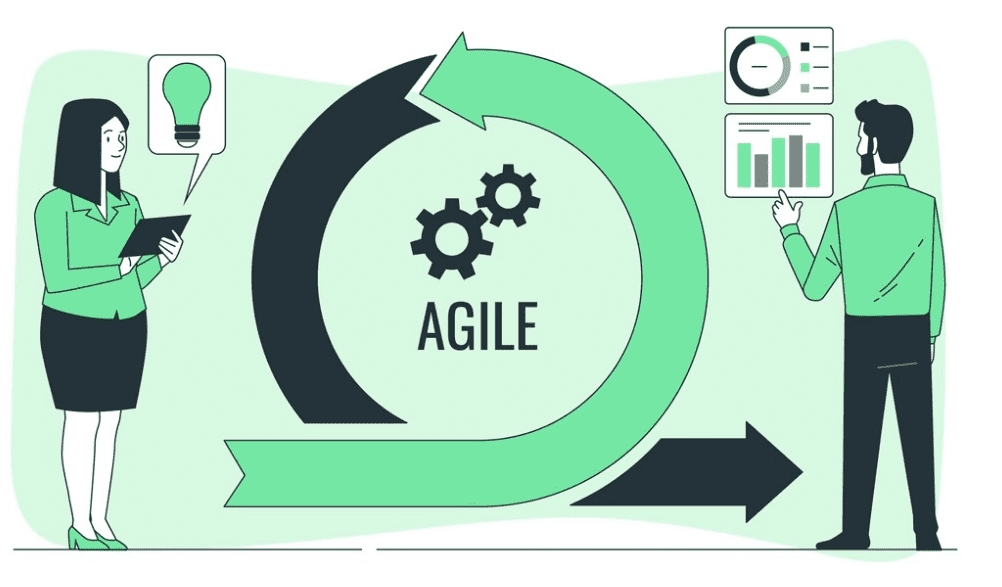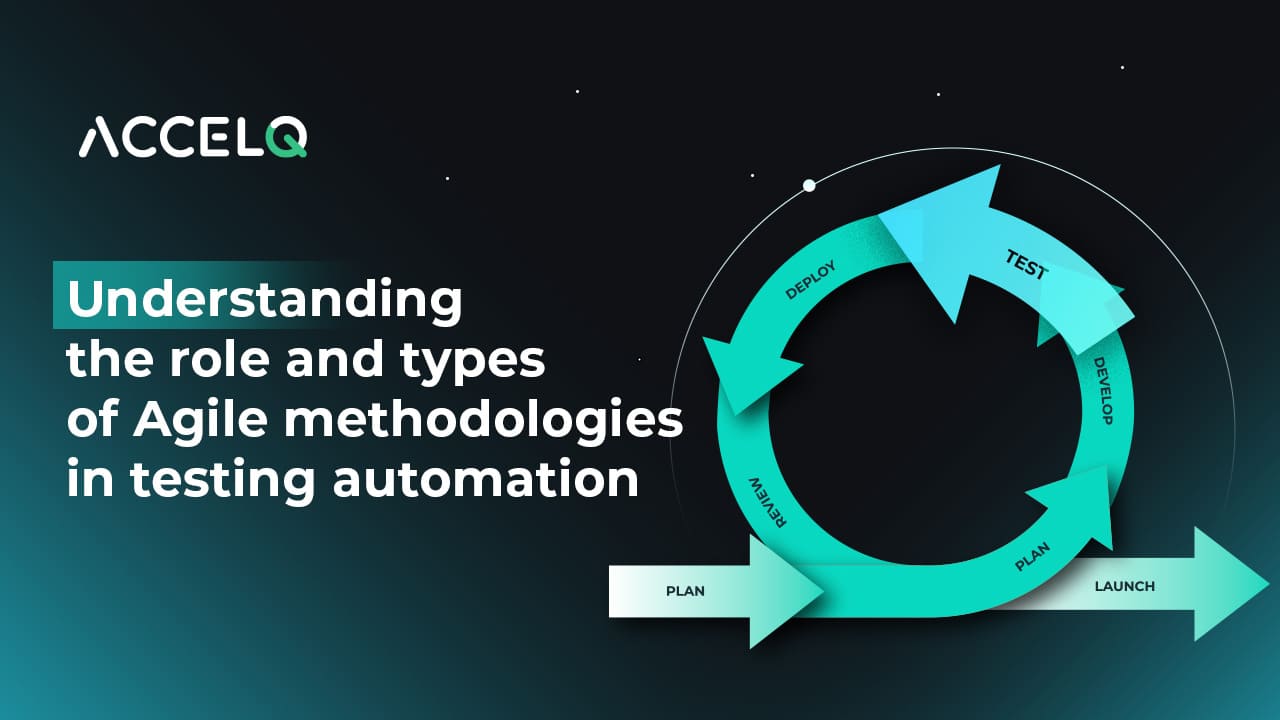Why Agile Test Automation Approach?

Agile methods are now seen as a flexible, efficient, and collaborative model. Unlike traditional waterfall approaches, which can result in longer development cycles and delayed feedback, agile approaches promote a culture of continuous improvement and flexible planning.
Test automation is key to this transformative approach and is a critical facilitator for teams to maintain the velocity and quality required by Agile techniques. This collaboration between Agile and test automation is beneficial. It enables the iterative development model, ensuring each release is flawless.
How Does Automation Testing Fit into Agile?
Integrating automation testing into Agile methodologies propels the agile process forward. Here's how automation testing fits seamlessly into Agile:
Facilitates CI/CD:
Automate test execution upon every code commit in CI/CD Pipelines. It ensures the new changes do not disturb the existing software functionality.
Supports Iterative Development:
Short, iterative cycles and immediate feedback on new features make agile projects successful. Automation testing delivers immediate response by quickly conducting a suite of tests that would take time if done manually.
Early Bug Detection:
By integrating automation testing early in the development cycle, teams can detect and address bugs early. It is crucial in Agile, as it prevents the accumulation of technical debt and ensures a higher quality product.
Enables TDD and BDD:
TDD and BDD practices are often used in agile environments. These practices involve writing automated tests before the actual code is implemented. It ensures the development work is focused more on meeting user expectations.
Improves Efficiency and Reduces Repetition:
Automation testing replaces manual testing, especially for regression, smoke, and sanity tests. It speeds up the entire testing process and enables the team to focus on the priority tasks.
Feedback and Adaptation:
Automated tests provide rapid feedback after implementing the changes and support the agile principle of adaptation to feedback. This continuous loop of feedback and adaptation is essential for the iterative improvement of the product.
Promotes Collaboration:
Automation testing in Agile creates a collaborative environment among developers, testers, and even stakeholders. This collaboration is facilitated by tools and practices that make test results accessible and understandable to all team members. It encourages shared responsibility for product quality.
SUGGESTED READ- QUALITY ASSURANCE IN AGILE METHODOLOGY
Test Automation in Agile vs Waterfall
The distinction between Agile and Waterfall methodologies extends deeply into their approach to test automation.
| Feature | Agile Methodology | Waterfall Methodology |
|---|---|---|
| Approach to Testing | Testing is integrated as a continuous activity throughout the development process. | Testing is a distinct phase that occurs after the development phase is complete. |
| Feedback Loop | Immediate feedback on new iterations allows for real-time issue resolution. | Feedback is delayed until the testing phase, making issue resolution more costly and time-consuming. |
| Role of Test Automation | Facilitates rapid testing cycles, enabling early and frequent testing. Automated tests are run against every build. | Often limited due to the sequential nature of the model. Automation, if present, is focused on later stages. |
| Adaptability to Change | Highly adaptable. Testing evolves with the project, accommodating changes in requirements seamlessly. | Less adaptable. Changes in requirements can necessitate revisiting and revising completed work. |
| Efficiency and Risk Management | Increases efficiency by building quality into the product from the beginning. Reduces the risk of late-stage surprises. | Efficiency can be hampered by late discovery of defects. Higher risk of project delays and cost overruns. |
| Focus of Testing | Emphasizes regression testing and meeting evolving customer requirements. | Focuses on verifying that the product meets the initially specified requirements. |
Agile Test Automation Strategy

Developing an Agile test automation strategy requires careful planning and alignment with Agile principles. The key is to ensure that test automation supports rapid development cycles and fosters collaboration among team members.
Assess Testing Practices:
Start by evaluating your current testing processes to identify areas for improvement and automation opportunities. Understanding the gaps in your testing process can enhance the automation strategy.
Scope and Objectives:
Defining the aim with test automation in your agile test automation framework eases the process. This includes identifying the tests to undergo automation based on ROI. Such as regression tests, smoke tests, and critical path tests.
Right Tools:
Choose the automation tool that supports the languages and frameworks that your team uses. They need to be scalable and maintainable.
Collaborative Environment:
Test automation in Agile requires close collaboration between developers, testers, and business analysts. It encourages knowledge sharing and responsibility for quality to ensure the accurate implementation of automated tests.
Implement in Phases:
Begin your test automation strategy with the most critical areas. It enables the gathering of feedback and adjustment before moving forward with the automation testing.
Evaluation and Improvement:
Agile test automation approach is not a set and forget process. It needs to be continuously evaluated and improved for an effective automation strategy. It helps adapt to new challenges and evolving project requirements.
Overcoming Agile Test Automation Challenges
Implementing test automation in Agile environments presents unique challenges.
- One of the biggest issues is keeping the test automation suite up with the Agile project’s fast development cycles. Update test scripts when features and functionalities change, which might be difficult.
- Another common obstacle is selecting the right tools that fit the team’s needs and project requirements. Perfect tools that balance between flexibility, usage, and integration capabilities.
- Flaky tests that pass and fail intermittently without code changes pose a significant challenge. They undermine the test process’s credibility and waste time and resources with false alarms.
To address these challenges, teams must cultivate a culture of continual learning and growth. Regularly assess and refine the test automation plan, invest in team training, and take a collaborative problem solving approach. All of these factors can contribute to the success of Agile test automation efforts.
Agile Test Automation Best Practices
Implementing test automation effectively in Agile environments requires a strategic approach from the outset.
Test Automation Early:
By automating tests as soon as development begins, teams can identify and address potential issues when they are simpler and less costly to fix. This proactive approach ensures that automation grows with the project, facilitating a smoother development process.
Choosing the Tools:
The tools should align with the project's requirements, the team's skills, and the technology stack used. Compatibility with the existing CI/CD pipeline is essential for ensuring seamless integration and smooth execution of automated tests.
Prioritizing High Value Tests
Focusing on automating high-risk and frequently executed tests, like critical path, regression, and complex feature tests. It optimizes resources and maximizes automation's impact on quality.
Simplicity and Maintainability
Clear, concise, and reusable test cases make the automation suite easier to manage and adapt over time. Overly complicated test scripts can become brittle and difficult to maintain. It leads to increased overhead and reduced effectiveness of the test automation efforts.
Continuous Integration (CI)
Integrating test automation into the CI pipeline enables automatic execution of tests with every code commit, facilitating early detection and resolution of issues. This continuous feedback loop is essential for maintaining the pace of Agile development while ensuring the software's quality.
Collaboration
Encouraging a culture of knowledge sharing and joint responsibility for test creation and maintenance fosters a more inclusive and effective testing environment. The automation strategy will likely align with technical and business objectives when developers, testers, and business analysts work together.
Review and Refine:
Periodic assessments of the automated tests help identify redundancies. It also allows for updates in response to new features and improves overall test coverage. Monitoring and analyzing test results provide valuable insights that can guide future testing efforts and contribute to the continuous improvement of software quality.
Conclusion
In Agile software development, test automation is essential. It lets teams deploy quickly without sacrificing quality. Teams can maximize Agile test automation by understanding and using its key ideas, establishing a strategic approach, overcoming common problems, following best practices, and monitoring progress with relevant metrics.
Nishan Joseph
VP Sales Engineering
Nishan is a tech strategist with expertise in Test Automation and roles at giants like TCS, Microfocus, and Parasoft. At ACCELQ, he champions Strategic Alliances, cultivating global tech partnerships. Educated at Leeds University and Symbiosis Pune, he also possesses an engineering background from Bangalore.





